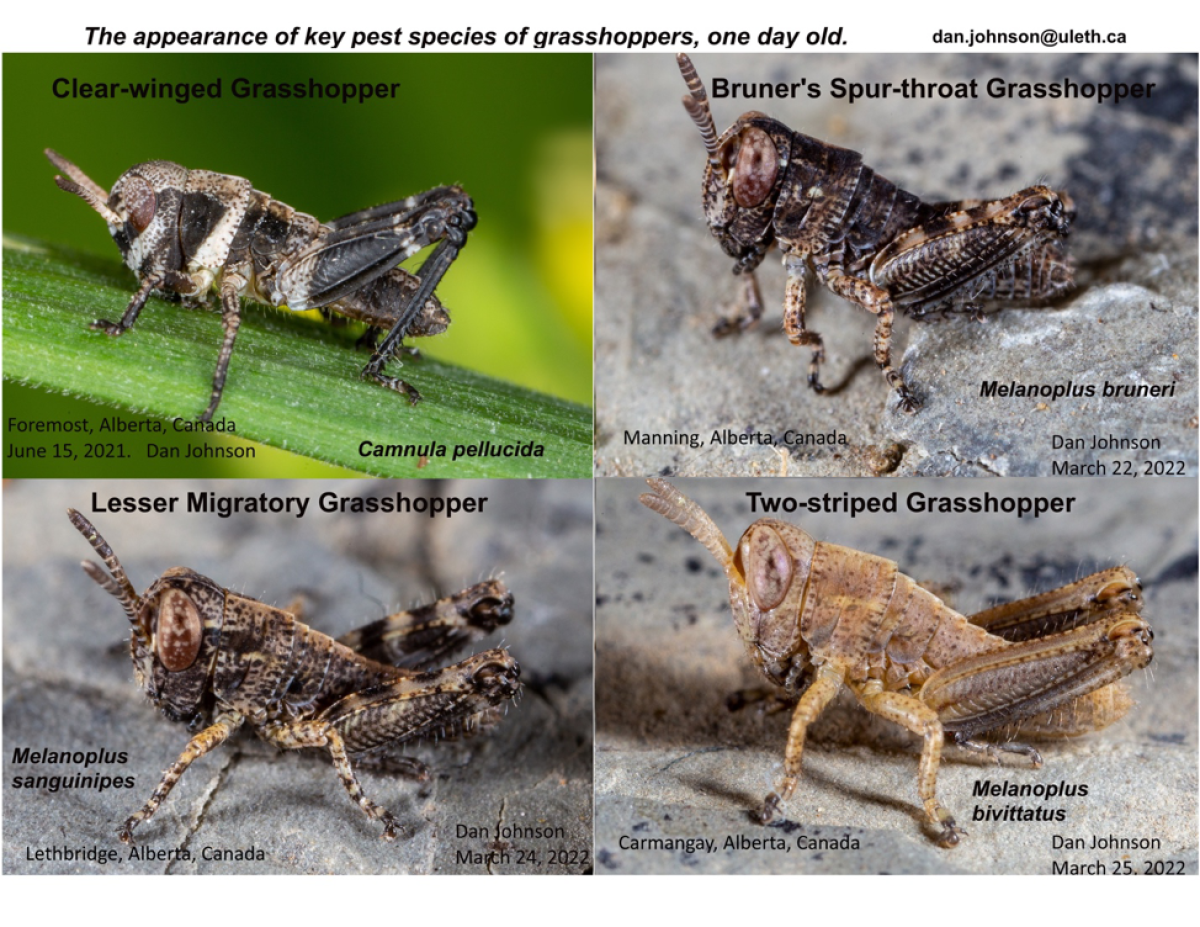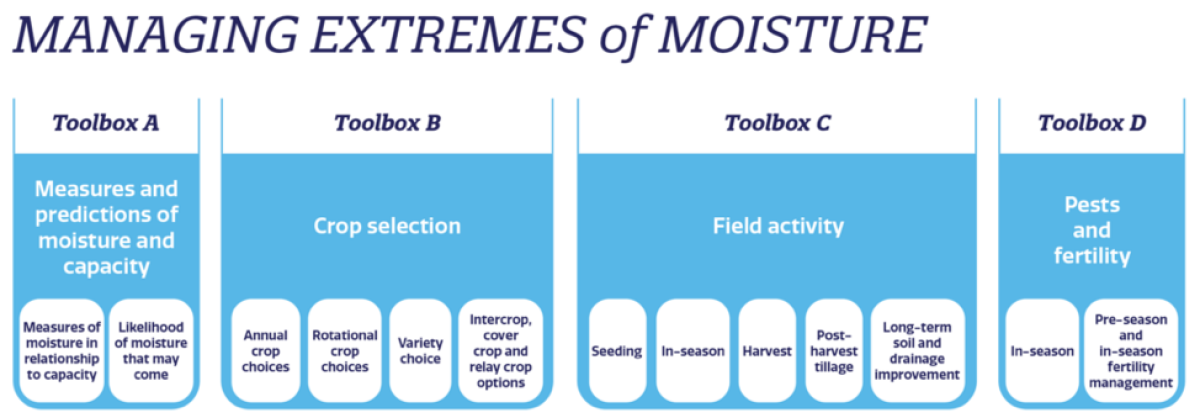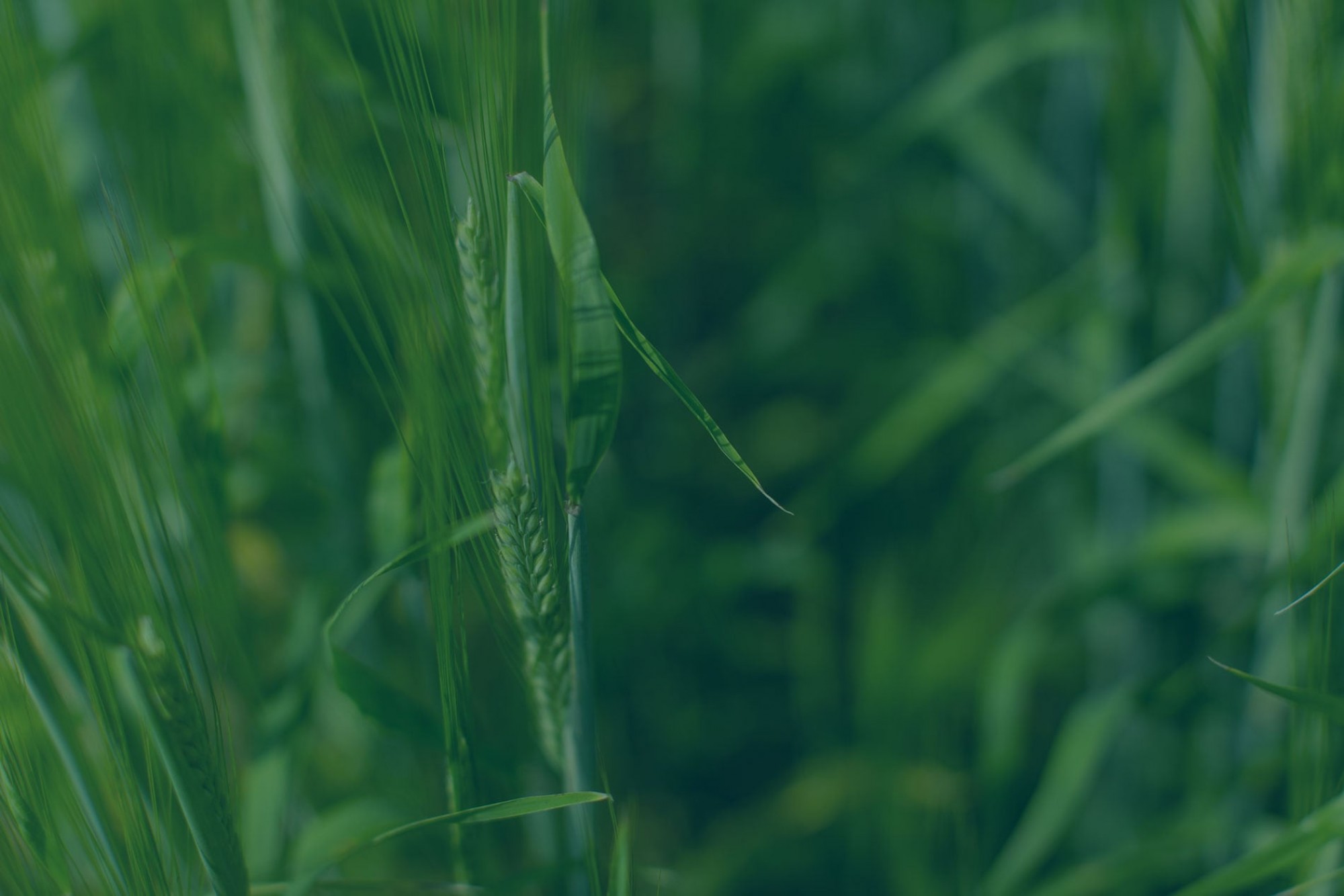Questions of the week
1. How do cool nights impact herbicide efficacy?
Temperature affects herbicide efficacy. Herbicides are generally more efficient in warm and sunny conditions when weeds are actively metabolizing. When night temperature drops to near zero, plant metabolism will pause during the night, and would not start again until the plant warm to at least 5°C. Ideally, leave 1-2 days of warm sunny days and nighttime lows of 4°C or higher before spraying herbicides.
Q: When spray window is limited, is it better to spray early and risk low efficacy, or delay spray for better conditions?
A: Weed growth is slower when temperatures are low, and picks up speed when it is warmer. If time and logistics allow, spraying herbicides in warmer, more favourable conditions provides higher efficacy.
2. When is the best time to spray emerging heavy grasshopper populations? Is it more efficient to wait for the full hatch or plan on spraying twice?
Grasshopper hatching is impacted by a few factors, including grasshopper species, timing of egg laying and temperatures.
Egg-laying by the crop pest species begins in late July and continues through September. The embryo grows in the egg up to a stopping point and then overwinters in the soil, where is it protected from predators and cold. In the spring, growth resumes when soil temperatures reach 12 to 15 C, depending on species.
If May to June is hot, the hatching window will be narrow. However, if the weather is rainy and cold, the hatching will be more spread out (which is more likely the case for 2024).
Before making the spray decision, there are a few things to consider:
1) Which species of grasshoppers are present?
Many grasshopper species live only on rangeland and other grasslands. They rarely cause economic damage in Canada. Out of the 85 grasshopper species in Alberta, only 5 of them are considered pests. Take the time to identify which species are present in the field and if they feed on the crop at that location.
Grasshopper Identification & Control Methods
2) Are the grasshopper nymphs causing damage to the crop?
Some grasshopper species do not feed on certain crops. Grasshopper feeding and development are impacted by environmental conditions. Insecticide application is not recommended if no actual crop damage is observed.
3) Are there any hotspots?
Hotspots such as field edges may have higher grasshopper populations. If crop damage is observed at the hotspots, target these areas with an insecticide application.

3. Flag leaf vs head timing, how to make fungicide timing decisions?
If the crop is at risk of foliar disease and FHB, will head timing fungicide provide adequate control or is a dual fungicide application needed?
Usually, the flag leaf and head timing is spaced by one to two weeks. If disease pressure is present at flag leaf stage, the same environmental conditions likely favour FHB infections too. Research from Alberta and Saskatchewan show that often a head timing fungicide provides the same, if not better, yield benefits as compared to a flag leaf timing fungicide.
In Alberta, even in high disease pressure years, it is unlikely to get economic returns from applying a dual fungicide at both flag leaf and head timings.
Exception: stripe rust. Stripe rust is best managed with genetic resistance and/or fungicide before the infection. Look for rust forecasts on Prairie Disease Monitoring Network. If stripe rust is present, fungicide should be applied at the 5% leaf coverage threshold to avoid significant economic losses. Do not wait till flag leaf or head timing to protect the crop from stripe rust.
Flag leaf timing or head timing fungicide on wheat: Which is the better choice?
4. Waterlogged soils – what’s going on and what can help?
Waterlogging is being found in the northeast and Peace Regions of the province. The excess water reduces the oxygen available to roots, causing damage through root death, nutrient deficiencies or toxicities, and reduced growth or death of the plant.
The 3-part series, made by Manitoba Crop Alliance, overviews the causes and management of flood and drought.
- Managing Extremes Of Moisture Part 1: Soil Properties And Definitions
- An overview of soil water and how soil texture impacts soil water
- Managing Extremes Of Moisture Part 2: Crop Selection, Pests And Fertility
- Managing Extremes Of Moisture Part 3: Field Activities


